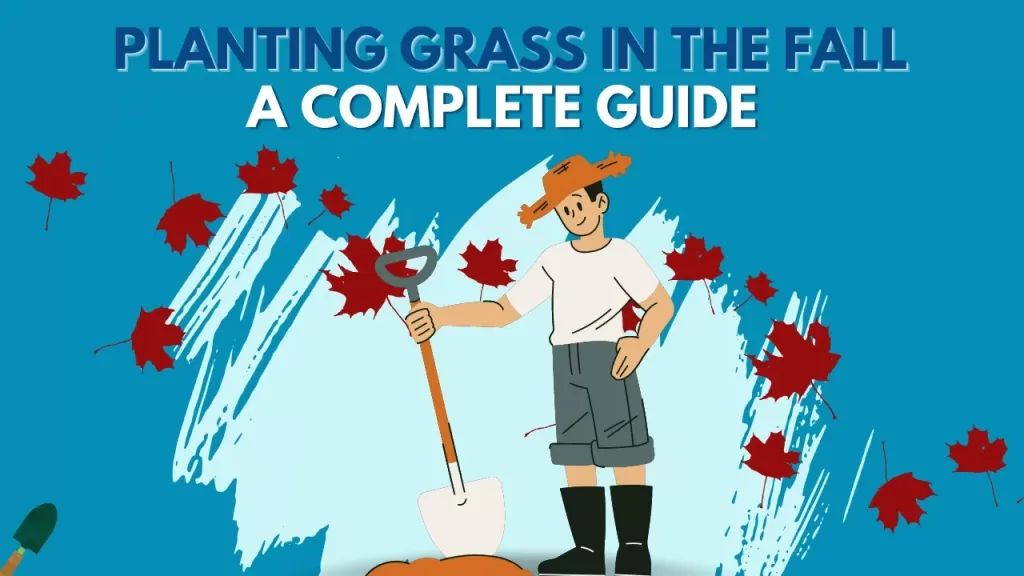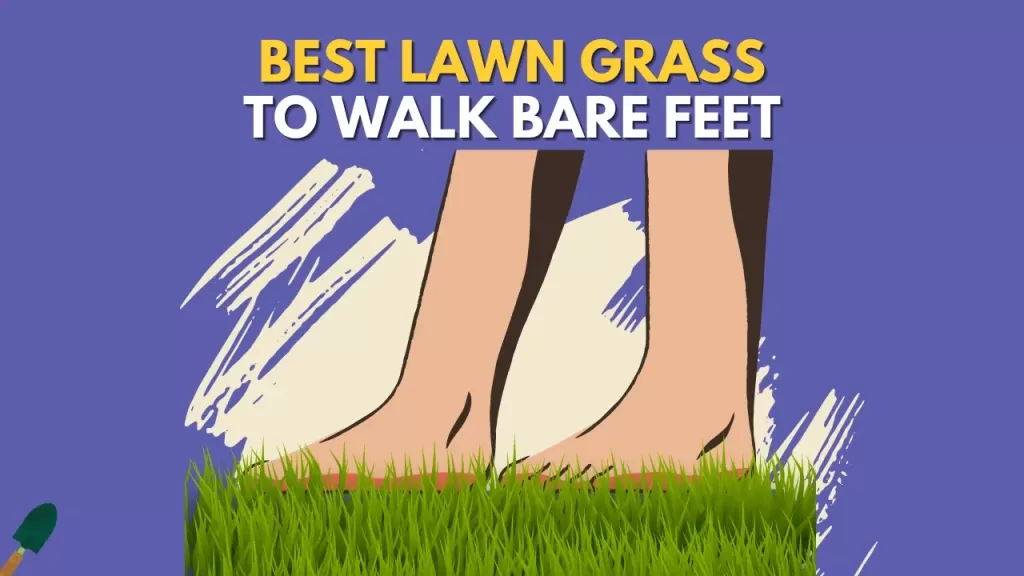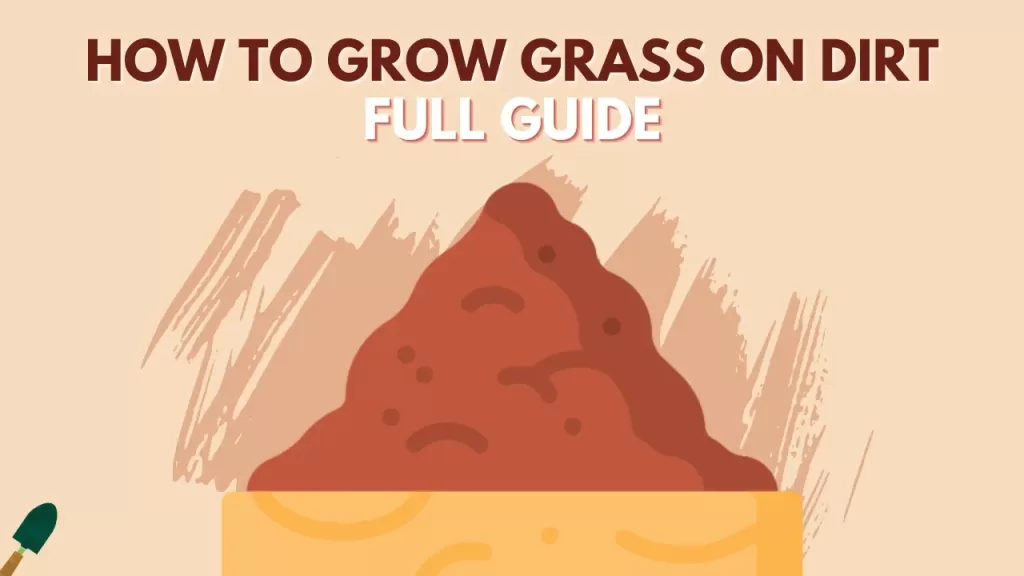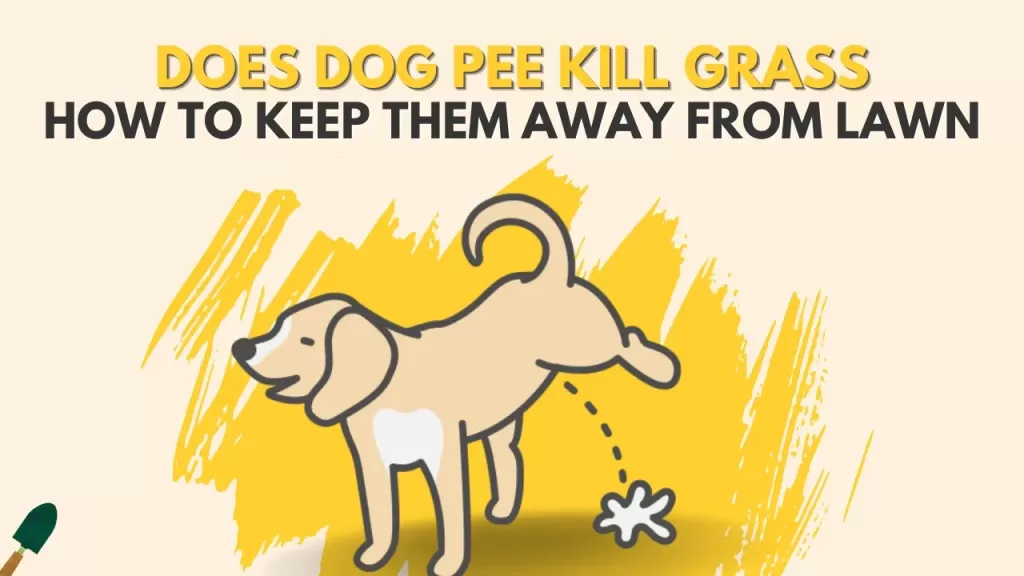Are you looking for the perfect time to seed cool/warm-season grasses and not sure about specifics? This article will aid you in choosing the perfect variants for your lawn when fall arrives. Make sure to read the whole article to suffice yourself with all the information and tips you need to know before planting grass in the fall.
You can plant cool-season grass in the fall as it is the ideal time for these seeds to germinate on the lawn. Fall seeding is also done on the warm-season lawn to keep them green in the winter dormancy period. The best time to plant the seed in the fall season is in the mid to late fall so the seeds have enough time to establish themselves in the lawn before the first frost.
WHAT IS THE BEST TIME TO PLANT GRASS SEED?
The best time to plant grass seed in the lawn depends on which type of grass you are planting. There are mainly two types of grasses, warm-season grasses such as Bermuda grass, Bahiagrass, zoysiagrass, and Centipede grass, and cool-season grasses such as Kentucky bluegrass, perennial ryegrass, and tall fescue.
So if you are planting warm-season grass on your lawn then the best time to plant the seed in the lawn would be after the last frost. These warm-season grasses germinate best when the soil temperature stays in the range between 65 F to 70 F. Planting the grass seed in late spring and early summer will be the best time as it will give the seeds the advantage of warm soil and early rain.
On the other hand, if you are planting cool-season grass in your lawn then the best time would be in the fall as the temperature reaches between 50 F to 60 F which is an ideal temperature for the cool-season grasses to germinate in the lawn. The fall is also the best time for planting the cool-season grasses because the warmer soil and cooler temperature in the evening make the seed germinate fast and establish in the new lawn.
BEST TIME TO PLANT GRASS SEEDS IN FALL
The best time in fall to plant the seed is from mid to late September. As in this period, the temperature of the soil and air is in optimal conditions for the seeds to properly germinate in the lawn but they also have plenty of time to establish themselves in the lawn before the first frost kicks in.
If you plant the seed in October or later, then there is a chance that the seeds won’t start germination due to temperature or if they germinate they won’t be able to withstand the winter and frost due to immaturity. So the best time is from late summer to early fall when the temperature is right and there is plenty of time to grow.
CONDITIONS TO PLANT GRASS SEED IN FALL
The germination of the seeds will be fast and strong when it is planted in the right season and with the right conditions. The timing and the day to plant the seed in the season also matters as if you plant the seed and there is heavy rain that week in your area, it will destroy all your efforts and the seeds will wash away.
On the other hand, if there is a hot week and the soil is going hotter then the seeds will die. So you need to make sure the timing is right; there is no forecast of heavy rain or heat and the conditions are right.
Also, you need to see if you have applied any weed control product to your lawn that can harm the seed and block germination. If you have applied then wait for the time mentioned in the product label so that it won’t affect the seed.
WHICH TYPE OF GRASS SEED TO PLANT IN THE FALL?
To choose the best seed for your lawn to plant in the fall, first, you need to see which type of lawn you have. Is it a warm-season lawn or a cool-season lawn? After deciding this you need to observe some other details like how much shade you have in your lawn. How much water is available for the lawn and how much time can you give to maintain it every week?
If you are just reseeding your existing lawn or filling up a patch then match the seed with the grass you already have in your lawn. After taking all of these things into consideration you can choose the best grass seed for your lawn.
Most common cool-season grasses: Kentucky Bluegrass, perennial ryegrass, and tall fescue.
Most common warm-season grasses: Bermudagrass, Zoysia grass, Bahiagrass and Centipede grass.
IF YOU ARE SEEDING A NEW LAWN, THEN WE HAVE A FULL GUIDE ON CHOOSING THE BEST GRASS FOR YOUR LAWN. DO CHECK IT OUT!
HOW TO PLANT GRASS SEED IN FALL?
Planting grass seed in the fall properly in your lawn is very crucial as it can make or break your lawn. Let’s see how to do it properly:
- Prepare the soil – Testing and preparing the soil for the seeds is very crucial to give the seeds the best base to grow thick in the lawn. If the soil is not prepared properly, like if it’s compacted or acidic or has fewer nutrients then the seeds will struggle to germinate and to establish in the lawn.
- Mow – the first thing to do to prepare the lawn and soil for overseeding is to mow the grass short so that all the things you will put in the lawn will get easily into the soil and when you spread the seeds. The grass doesn’t shade the seeds and gives them enough sunlight to germinate in the lawn.
- Aerate – aeration is very important for the lawn before overseeding to loosen up the soil and make it healthier for new seeds to go deep in the soil and establish themselves. If the soil is compact, the seeds won’t be able to establish roots properly in the soil.
- Dethatch – dethatching or scarifying is optional before overseeding the lawn. Check to see how deep the thatch is in your lawn. If you find the thatch layer to be more than half an inch then you need to dethatch the lawn as thatch can block the seeds from getting into the soil.
- Clean – after mowing the lawn, clean it from all the dead grass as well as all the rocks and debris in your lawn which can hide the soil underneath and won’t let the seeds go into the soil and germinate.
- Fertilize – after preparing the soil and cleaning, give your soil proper nutrients to support the new seeds which will be germinating in the soil as if the soil doesn’t have proper nutrients use a starter fertilizer in the lawn, which will give an initial boost to the new seeds to germinate fast in the lawn by releasing the nutrients very fast into the soil.
- Restore pH – also for preparing the soil, check whether the health of the soil is good or not by checking the acidity of the soil. The ideal soil pH for a healthy lawn should be between 5.5 to 7. If you see the soil pH to be below or above this range then you need to add garden lime to the soil which will slowly restore the lawn acidity from the soil.
- Plant the seed -After you have cleaned and prepared your soil. Now you can overseed the lawn. Check the label of the seed to know what ratio you should go with the seeding and do half of the ratio vertically and then the other half horizontally in the lawn to get the perfect spread in the lawn and to make sure you don’t leave any spot in the lawn.
- Rake – After spreading the seed lightly rake the lawn to make sure the seeds are in contact with the soil and covered lightly with the soil. Don’t rake heavily as it can make the seeds go deep and the seeds get sunlight and germinate in the lawn.
- Roll – Rolling is also a good option after seeding to make sure the seeds are in the soil and not above it. As exposed seeds won’t be able to properly germinate and also can be eaten by birds and other seeds-eating animals.
- Water – After raking and rolling, lightly water the lawn to make the soil moist for the seed to germinate and keep watering the lawn 2 times a day. Don’t water heavily as it can wash away the seeds and can ruin all your efforts. Also, you need to keep the soil moist all day for the seed to germinate quickly so watering 2-3 times is preferred.
WHAT TO DO AFTER THE GRASS SPROUTS?
Once the grass has sprouted and grows to half-inch high. Start reducing the frequency of the watering in the lawn and start doing heavy and deep watering so that the water can get deep into the soil.
This will make the roots go and search for water in the soil and make your grass heat and drought resistant and your lawn healthy and thick even in the summer.
Once the grass has established itself after the sprouting. Check the grass by pulling it from the soil lightly. If the grass is not coming out then you can start mowing the lawn.
For the initial mowing, don’t cut a lot of grass. Just remove a little bit of grass from the top as cutting a lot can stress the grass. After this then slowly decrease the height of the blade. This will also encourage the grass to grow sideways and make your lawn look thick.
HOW LATE IN THE FALL CAN GRASS BE PLANTED?
Up to mid-October, this is the last you can go to plant seeds in the lawn so that the seeds can germinate. The best time is in September to plant the seed to get the best result but if you are late and can’t plant the seed in September then you can plant the seed until mid-October to get the seed to germinate.
WHICH GRASSES GROW IN FALL AND WINTER?
Cool-season grasses like Kentucky bluegrass, tall fescue, and perennial ryegrass are some of the grasses which grow in the fall and winter seasons. These grasses germinate between 50 to 60 degrees Fahrenheit and grow in the winter season.
HOW LONG DOES IT TAKE FOR WINTER GRASS TO GROW?
It takes 7 to 10 days for the winter grasses like Kentucky bluegrass, tall fescue, and perennial ryegrass. After the germination, the grass takes 15 to 20 days to fully establish itself on the lawn and is ready to be mowed.
CAN WARM-SEASON GRASS BE PLANTED IN FALL?
Yes, warm-season grasses can be planted in the early to mid-fall to make the seed germinate and establish itself in the lawn. You can both start a new lawn or overseed a warm-season lawn in the fall.
WHAT IS FALL DORMANT SEEDING?
Fall dormant season is a process of spreading seeds in the fall but after the soil and air temperatures are lower than ideal temperature for the seed to germinate so that the seeds lay dormant in the lawn until spring when the temperature of the soil becomes hot and ideal in the range between 60 to 70 degrees Fahrenheit so that the seeds start to germinate early and the lawn gets thick and green fast. Dormant seeding is done in November when the soil is too low.
Covering the seed with soil or mulch will protect it from frost or cool temperatures. If the seeds are laid open in the ground then the seeds can rot or won’t germinate when the spring comes.
So now you are all ready to plant precise grass seeds in the fall. GET SET GARDENING!





